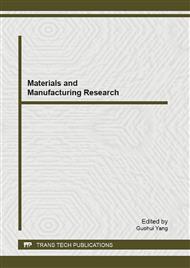p.481
p.487
p.497
p.502
p.508
p.513
p.518
p.522
p.527
Influence of Clique Potential Parameters on Classification Using Bayesian MRF Model for Remote Sensing Image in Dali Erhai Basin
Abstract:
Image classification of remote sensing data is an important topic and long-term tasks in applications [1]. Markov random field (MRF) has more advantages in processing contextual information [2]. Bayesian approach enables the incorporation of prior model and likelihood distribution, this paper has formulated a Bayesian-MRF classification model based on MAP-ICM framework. It uses Potts model in label field and assume Gaussian distribution in observation field. According to maximum a posteriori (MAP) criterion, each new classified label can be obtained by the minimum of energy using Iterated Conditional Modes (ICM) algorithm. Finally, classification tasks are carried out by Bayesian-MRF classification model. Experimental results show that: (1) Clique potential parameters affect classification greatly. When it is 0.5, the classification accuracy reaches maximum with the best classification result for study area of Dali Erhai Lake basin using landsat TM data. (2) Bayesian MRF model have obvious advantages in classification for neighbourhood pixels so that it can separate Shadow class from Water class because the Shadow in mountain areas is very similar to Water in spectrum. In this case study, the best classification accuracy reaches 95.8%. The approaches and results will have important reference value for applications such as land use/cover classification, environment/ecological monitoring etc.
Info:
Periodical:
Pages:
508-512
Citation:
Online since:
January 2013
Authors:
Price:
Сopyright:
© 2013 Trans Tech Publications Ltd. All Rights Reserved
Share:
Citation:


